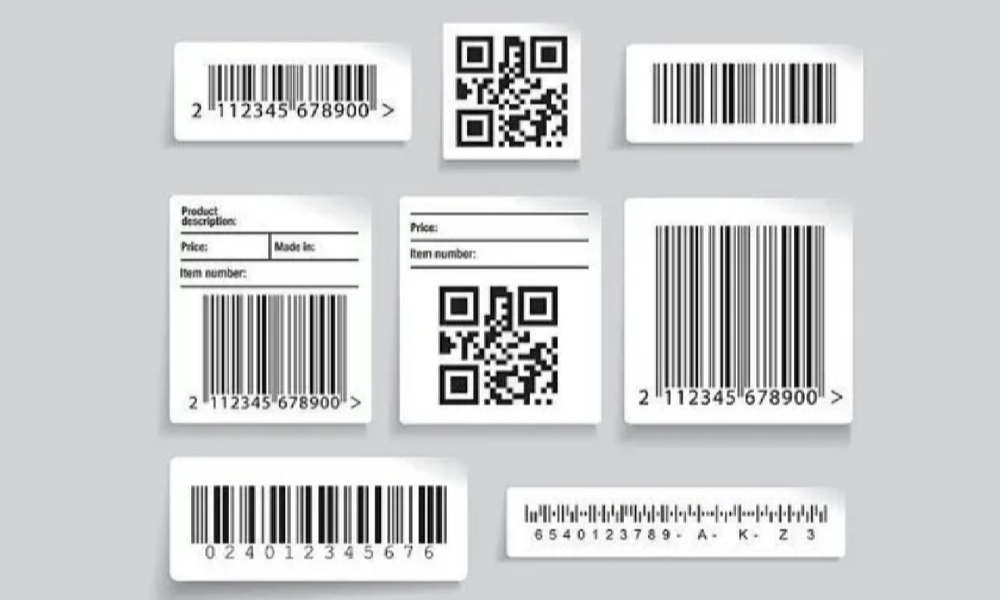
How To Create Effective Barcode Labels: Tips And Tricks
Barcode labels serve as the backbone of efficient inventory management, enabling businesses to track products, manage stock levels, and streamline operations. However, creating effective barcode labels requires careful consideration of various factors, including label design, printing methods, and data encoding. In this guide, we'll explore valuable tips and tricks for creating barcode labels that are accurate, reliable, and easy to scan, leveraging the capabilities of barcode label printers and maximizing the effectiveness of barcode labels.
Understanding Barcode Basics
Before delving into the tips for creating effective barcode labels, it's essential to understand the basics of barcode symbologies and encoding. Barcode symbologies, such as Code 39, Code 128, and QR codes, encode alphanumeric data in a visual pattern of bars and spaces. Each symbology has unique characteristics, including data density, error detection, and scanning compatibility, which should be considered when selecting the appropriate symbology for your application.
Choose The Right Barcode Label Printer
Selecting the right barcode label printer is crucial for achieving high-quality barcode labels. Thermal printers, including direct thermal and thermal transfer printers, are commonly used for barcode label printing due to their reliability, speed, and cost-effectiveness. When choosing a printer, consider factors such as print resolution, printing speed, label size compatibility, and connectivity options to ensure compatibility with your labeling requirements.
Optimize Label Design
Effective barcode labels start with a well-designed label layout that prioritizes readability and scanning accuracy. Keep the following design principles in mind:
- Label Size and Placement: Ensure that the barcode label size is appropriate for the product or packaging, allowing sufficient space for the barcode symbol and human-readable text. Place the barcode in a prominent location that is easily accessible for scanning.
- Clear Contrast: Use high-contrast colors between the barcode symbol and background to ensure optimal scanning performance. Dark bars on a light background or vice versa are recommended for maximum readability.
- Quiet Zones: Maintain adequate quiet zones (blank spaces) around the barcode symbol to prevent interference from surrounding elements, such as text or graphics. The quiet zones ensure accurate decoding by barcode scanners.
- Human-Readable Text: Include human-readable text, such as product names, serial numbers, or descriptions, alongside the barcode symbol to provide additional information and facilitate manual data entry when necessary.
Select The Right Barcode Symbology
Choosing the appropriate barcode symbology is critical for encoding the required data and ensuring compatibility with scanning equipment. Consider the following factors when selecting a symbology:
- Data Capacity: Evaluate the amount of data to be encoded in the barcode and choose a symbology with sufficient data capacity to accommodate your needs.
- Scanning Environment: Consider the scanning environment, including scanning distance, lighting conditions, and scanning equipment compatibility, to select a symbology that performs well under these conditions.
- Industry Standards: Adhere to industry standards and guidelines, such as GS1 standards for retail products, when selecting barcode symbologies to ensure interoperability and compliance with regulatory requirements.
Verify Barcode Quality
Before printing a large batch of barcode labels, it's essential to verify the quality and readability of the barcode symbols. Use barcode verification tools or software to analyze the printed barcode for factors such as quiet zone violations, symbol contrast, edge sharpness, and print defects. Barcode verification helps identify potential issues early in the design or printing process, allowing for adjustments to optimize barcode quality and scanning performance.
Test Printing Parameters
Optimize printing parameters, such as print speed, darkness, and label media, to achieve optimal print quality and barcode readability. Conduct test prints using various printing settings to evaluate the impact on barcode quality and adjust parameters accordingly. Factors such as print resolution, printhead alignment, and media type can affect barcode clarity and scanning performance, so it's essential to fine-tune printing parameters for optimal results.
Implement Data Validation Measures
Ensure data accuracy and integrity by implementing data validation measures during barcode label creation. Validate encoded data against the source database or information system to prevent errors, such as incorrect product codes or missing information. Incorporate error-checking mechanisms, such as check digits or parity bits, into the barcode symbology to detect and correct data errors automatically.
Maintain Consistency And Standardization
Maintain consistency and standardization across barcode labels to ensure uniformity and compatibility with scanning equipment and systems. Establish labeling guidelines and standards, including barcode symbologies, label formats, and data encoding conventions, to promote consistency and interoperability. Train employees on proper labeling procedures and ensure adherence to labeling standards to avoid inconsistencies and errors in barcode labels.
Conclusion
Creating effective barcode labels requires careful planning, attention to detail, and adherence to best practices in label design, printing, and data encoding. By leveraging the capabilities of barcode label printers and following the tips and tricks outlined in this guide, businesses can produce high-quality barcode labels that enhance efficiency, accuracy, and productivity in inventory management and tracking operations. Whether printing labels for retail products, shipping packages, or asset tracking, implementing these strategies will ensure that barcode labels serve as reliable tools for optimizing business processes and driving success.
